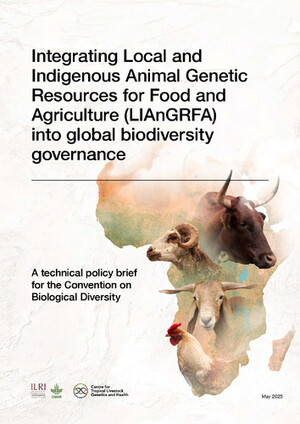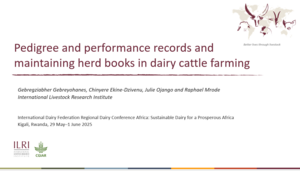
Rangelands Atlas
Abstract
Rangelands can be described as land on which the vegetation
is predominantly grasses, grass-like plants, forbs or shrubs,
and often with trees that are grazed or have the potential to be
grazed by livestock and wildlife. They are diverse in their vegetation
driven by highly fluctuating rainfall, temperature and other climate
phenomena, and habitat for a wide range of wildlife, many species
of which are found nowhere else. Rangelands store vast amounts of
carbon and either originate or serve as freshwater catchment areas for
most of the world’s largest rivers and wetlands. Rangelands are home
to millions of people, from pastoralists to hunter-gatherers to ranchers
to conservationists. Rangelands feed millions of people worldwide.
Rangelands have significant cultural and aesthetic value too, and for
many, are places of inspiration and beauty.
This Rangelands Atlas has been developed to document and raise
awareness on the enormous environmental, economic and social value
of rangelands as well as their different ecosystems. It highlights many of
the changes taking place in rangelands due to climate change, land use
and conversion trends, investments and other changes: of most concern
is the predicted trends of climate change and biodiversity loss, which
will have significant impacts on some rangeland ecosystems.
The spatial mapping of rangelands was produced by focusing on
seven of the 14 global biomes categorised by WWF in their mapping of
terrestrial ecoregions around the world. These seven biomes include
different types of mainly dryland grasslands, savannas, shrublands and
forests, together with wetter and colder biomes such as tundra. Though
this mapping does not take into account actual land use and other
changes that have taken place on the ground, it is a useful starting
point for identifying, documenting and raising awareness on the overall
characteristics of rangelands, their contribution to livestock and other
food production, ecosystem services, conservation and the broader
trends of change taking place.
The Atlas also highlights significant data gaps in rangelands, which
have seen proportionately less investment in this regard than other
land uses and ecosystems. The spatial map of rangelands is combined
with other existing global datasets on different themes, to produce a
mapping of that data ‘for rangelands.’
Each entry is presented with a short explanation of the map, some key figures produced from the big data that produced the map, a story from
the field adding a taste of a local experience and/or perspective, and some explanation of terminologies used in the map as required. We are
reliant on the accuracy of the datasets we have accessed: the data have not been verified at regional, country or local level, and therefore is only an indicator of broad and estimated figures and trends.
Citation
ILRI, IUCN, FAO, WWF, UNEP and ILC. 2021. Rangelands Atlas. Nairobi Kenya: ILRI.










